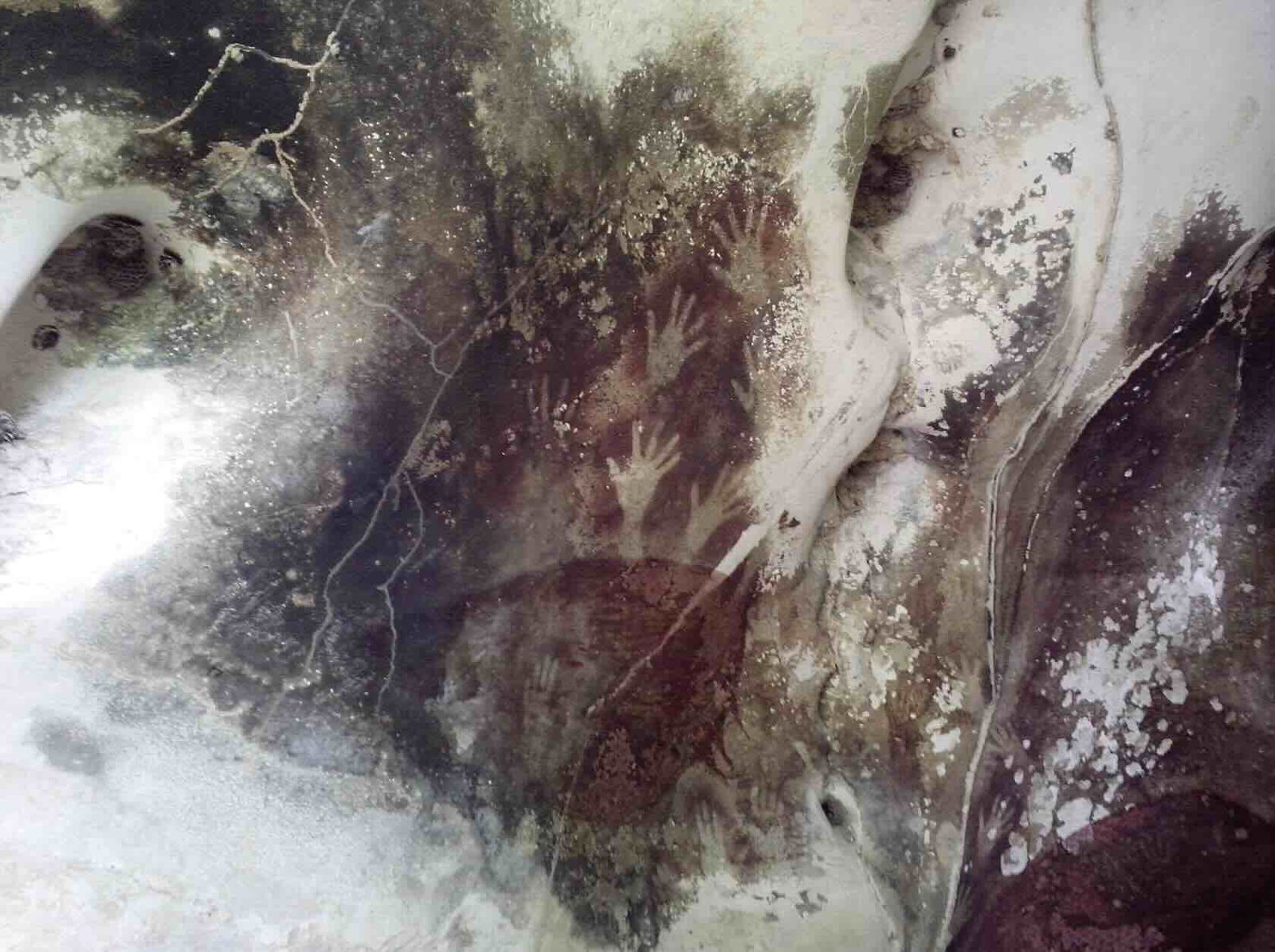New evidence reaffirms that rock art on the Indonesian island of Sulawesi is the oldest known in the world, according to a study that now dates the enigmatic paintings to 51,200 years ago.
These discoveries push the temporal boundaries of human activity on Sulawesi, raising new questions about the origins of the island’s ancient art and its relationship to early human migrations.
Recent studies involving advanced laser ablation techniques have examined the images on the cave walls, which include ancient depictions of animals such as pigs and cattle as well as depictions of anthropomorphic forms on sticks. The new analysis reveals that the art is likely several thousand years older than previously thought.
However, the extreme age of the artworks preserved in the cave could hint at another interesting possibility: that their creators were not modern humans, but rather one of our ancient hominin cousins. Such a discovery, if proven, would have profound implications for the origins of figurative art and the cognitive abilities of our now-extinct hominin ancestors.
The Sulawesi Enigma
Famous for its ancient cave paintings, Sulawesi has long fascinated archaeologists. Among the island’s most notable rock art is a 4.2-metre-wide panel depicting crude images of early humans hunting what are believed to be warty pigs and dwarf cattle with spears.
Previous work had already revealed the presence on the island of what archaeologists have recognized as one of the oldest rock art works in the world. A process known as uranium series in solution (or U series) was used to analyze calcite deposits that had formed on the works on the walls of Maros-Pangkep, a rock art site located in the southern part of the island. This technique, which allows the rock walls to be analyzed without taking physical samples, provides a more precise estimate by distinguishing the layers of sediment.


However, in their recent study, researchers led by Indonesian archaeologist Adhi Augus Oktaviana used what they describe as “a novel application of this approach,” called U-series laser ablation imaging, which allowed them to more precisely date some of the region’s earliest rock art.
In a recent study detailing their work, the researchers write, “This method provides improved spatial accuracy,” making it possible to obtain older minimum ages for already-dated artworks.
Recalculating the world’s oldest rock art
The new analyses revealed some remarkable results. A hunting scene discovered at the Leang Bulu’ Sipong 4 site, which had been dated to at least 43,900 years ago in a previous analysis, was found to have a minimum age closer to 51,200 years, making the art at the site at least 4,040 years older than initial estimates had placed it.
“Painted at least 51,200 years ago, this narrative composition, which depicts humanoid figures interacting with a pig, is now the oldest known example of figurative art and visual storytelling in the world,” say the authors of the new study.
The authors add that their new analysis reveals a much deeper origin of figurative representations of animals and humans than previously believed.


Of course, the revised dates of Sulawesi rock art raise new questions about which species of hominids were actually serving as artists at the time. According to the most commonly accepted chronologies, modern humans left Africa 50,000 to 60,000 years ago, or even 90,000 years ago.
Considering these more precise estimates of when these ancient migrations might have begun, one might wonder how likely it is that modern humans could have been present on Sulawesi at the time the recently dated cave paintings were made. The oldest known modern human remains on the island date back no more than 25,000 years, although evidence of human presence in the form of rock shelters and stone tool use has been found, suggesting that humans could have been present much earlier, as early as 118,000 years ago.
While the possibility that modern humans arrived on the island so long ago is a difficult question, there is no doubt that our ancient hominid cousins were present on Sulawesi at that time. Past fossil discoveries have provided compelling evidence of hominids on the island as early as 194,000 years ago.


Challenging old theories
While pushing back the timelines for the use of figurative art on Sulawesi and raising questions about which species might have achieved it, the new findings also challenge past ideas that attributed the art’s origins to Europe around the end of the Ice Age.
The team’s findings also suggest that humans may have been creating this type of art long before they arrived in Asia, or even earlier, at a time before modern humans are thought to have left Africa; a controversial possibility that some researchers, including British anthropologist Chris Stringer, have begun to propose in recent years.
However, if it were ever proven that another hominid species had the cognitive development necessary to create representational art so long ago, it would potentially upend our existing ideas about the capabilities of our early human ancestors and their hominid relatives.
At the very least, the authors admit in their study that the new findings suggest “a rich storytelling culture developed early in the long history of Homo sapiens in this region—in particular, the use of staged representations to tell visual stories about human-animal relationships.”
The new paper, led by Oktaviana et al. and titled “Narrative Rock Art in Indonesia 51,200 Years Ago,” appeared in the journal Nature July 3, 2024.
Micah Hanks is the editor and co-founder of The Debrief. He can be reached by email at micah@thedebrief.org. Follow his work on micahhanks.com and on X: @MicahHanks.